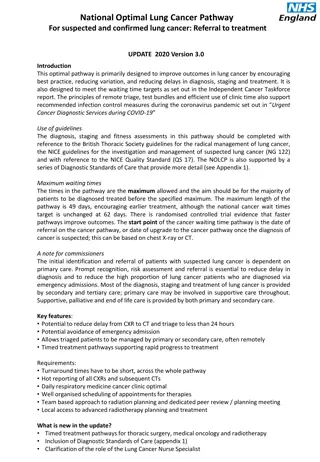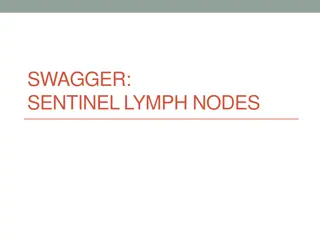Summary Staging in Cancer Cases
Staging cancer cases is a critical process to determine the extent of the disease at diagnosis. Summary staging, including SEER Summary Stage 2000, categorizes cancer spread, combining clinical and pathologic data. Learn about primary staging systems, summary staging groups, and how cancer spreads locally and beyond.
Download Presentation

Please find below an Image/Link to download the presentation.
The content on the website is provided AS IS for your information and personal use only. It may not be sold, licensed, or shared on other websites without obtaining consent from the author.If you encounter any issues during the download, it is possible that the publisher has removed the file from their server.
You are allowed to download the files provided on this website for personal or commercial use, subject to the condition that they are used lawfully. All files are the property of their respective owners.
The content on the website is provided AS IS for your information and personal use only. It may not be sold, licensed, or shared on other websites without obtaining consent from the author.
E N D
Presentation Transcript
Directly Coded Summary Stage Nicole Catlett, CTR Kentucky Cancer Registry Spring Training April 2015
Objectives What is Staging? What is Summary Staging? How do I assign Summary Stage? What are the Summary Staging Groups? Important Points
What is Staging? A method of grouping cancer cases by primary site to determine how far the cancer has spread at the time of diagnosis.
What is Summary Staging? SEER Summary Stage 2000 is the most basic way of categorizing how far a cancer has spread from its point of origin. Young JL Jr, Roffers SD, Ries LAG, Fritz AG, Hurlbut AA (eds). SEER Summary Staging Manual -2000: Codes and Coding Instructions, National Cancer Institute, NIH Pub. No. 01-4969, Bethesda, MD, 2001.
What is Summary Staging? Summary staging uses all information available in the medical record: in other words, it is a combination of the most precise clinical and pathologic documentation of the extent of disease. Young JL Jr, Roffers SD, Ries LAG, Fritz AG, Hurlbut AA (eds). SEER Summary Staging Manual - 2000: Codes and Coding Instructions, National Cancer Institute, NIH Pub. No. 01-4969, Bethesda, MD, 2001.
Summary Stage Background SS77 - Diagnosed prior to 2001 SS2000 - Diagnosed from 1/1/2001 Collaborative Staging - Diagnosed from 1/1/2004 SS 2000 Directly Coded - Diagnosed 1/1/2015 * Currently Summary Stage is being derived by Collaborative Staging *
What is Summary Staging? General categories of in situ, local, regional and distant Codes range from 0 9 Combines best clinical and pathological documentation Applies to all sites and histologies (unless otherwise noted) Used by central cancer registries
How Cancer Spreads Local invasion By direct extension Via Lymphatic system Via blood-borne metastases Intracavity metastatic seeding
Summary Stage Answers four basic questions about the extent 1. Where did the cancer start? 2. Where did the cancer go? 3. How did the cancer get to the other organ or structure? Continuous line of cancer cells from the primary site? Probably direct extension Cancer cells break away from primary cancer and traveled through blood stream or body fluids? Probably distant 4. What are the stage and correct code for this cancer?
Features of Summary Stage List of Ambiguous Terms for determining involvement Site specific chapters (by ICD-O-3 primary site) - Regional tissues and nodes are listed for each site - Additional information such as definitions, diagrams and notes Site specific rules (relatively few) - Hematopoietic diseases are always distant (code 7) - Lymphoma and Kaposi sarcoma have histology specific schemes any mention of lymph nodes is indicative of involvement only codes 1, 5 and 7 apply Unknown primary site is always unknown stage (code 9) Assign the highest applicable code
Ambiguous Terminology for Involvement SOME OF THE TERMS THAT CAN BE USED: - Compatible with - Consistent with - Features of - Most likely - Probable - Presumed A complete list can be found on page 15 in the Introduction to Summary Staging section of SEER Summary Staging 2000 Manual. - Suspected - Suspicious SOME OF THE TERMS NOT TO BE USED: - abuts - approaching - attached - encased/encasing - equivocal - possible Available on SEER website: (seer.cancer.gov) - questionable - worrisome
Timing Rule All information through completion of surgery (ies) (first course of treatment) or within four months of diagnosis in the absence of disease progression or whichever is longer
Timing Rule Stage may be determined after treatment with radiation, chemotherapy, hormones, or immunotherapy IF You follow the 4-month rule and do not stage after disease progression
Timing Rule Example Prostate biopsy c/w Adenocarcinoma grade 3 2/10 3/01 Bone scan negative 3/15 Radiation to prostate 7/01 Patient complaining of hip pain 7/04 Bone scan: metastatic disease from prostate cancer Would you include all of this information to Would you include all of this information to determine stage? determine stage?
Where do I start? Where did the cancer start? The correct primary site or The correct histology What is the stage? How far has the cancer spread?
Where do I look? Pathology Reports Cytology Reports Bone Marrow Biopsies Autopsy Reports History and Physical Admitting Notes Discharge Summary Consultative Reports
KEEP LOOKING! X-rays and imaging studies Scopes and manipulative procedures Laboratory reports Operative reports Treatment Physician s office records/letters Cancer Conferences Physician Advisor
Summary Stage Groups Stage Groups 0 1 2 3 4 5 7 9 In situ Local Regional by Direct Extension Regional Lymph Nodes only involved Regional by both Direct Extension and to Regional Lymph Nodes Regional, NOS Distant Site and/or Distant Lymph Nodes Unknown or Not Applicable
Summary Stage Groups Code 8 Benign & Borderline CNS Not applicable Added in 2003 Never use for malignant tumors
IN SITU = Stage 0 Only determined by a pathologist No invasion of the basement membrane No evidence of invasion, extension, or nodal involvement Carcinoma and Melanoma only No foci of invasion No microinvasion
IN SITU Be careful when reading pathology reports 1. Large in situ carcinoma of the breast with 3 of 15 axillary nodes positive for cancer 2. Final Diagnosis: Carcinoma in situ with a foci of microinvasion on the lateral margin Would you stage these in situ? 1.______________ 2.______________
LOCALIZED = Stage 1 Rule out in situ is there invasion? Rule out any nodal involvement Rule out extension to regional organ(s) or tissues Rule out distant disease Cancer must be confined to the organ of origin
LOCALIZED If still within the organ of origin Blood vessel invasion Perineural lymphatic invasion Vascular invasion Multiple tumors, same cell type Metastases within the organ of origin Multifocal Does not change the stage Potential for spread
REGIONAL DISEASE Subdivided into Stages 2-5 Stage 2 - Regional By Direct Extension Stage 3 - Invasion of Regional Lymph Nodes (first drainage area) Stage 4 Both Extension & Nodes Stage 5 - Regional NOS
REGIONAL, NOS = Stage 5 Insufficient workup or information Patient did not continue with workup Clinical diagnosis only
Site Specific Lymph Nodes Regional Lymph Nodes Distant Lymph Nodes Not listed as regional or distant - Synonymous with a listed node - Non Synonymous, assume distant
SOLID TUMORS Palpable, visible, swelling, or shotty lymph nodes are not considered involved Enlarged and lymphadenopathy should be ignored EXCEPT for lung Matted lymph nodes, or for example, mass in the mediastinum are considered involvement
Lymph Node Involvement TUMOR INVOLVED TUMOR NO INVOLVEMENT SOLID TUMORS Fixed, matted mass in the mediastinum, Retro peritoneum and/or mesentery ANY TUMOR Palpable, visible, swelling, shotty (without clinical or path statement) LUNG Enlarged, lymphadenopathy ANY TUMOR (except lung) Enlarged, lymphadenopathy LYMPHOMAS Any mention of lymph nodes
Lymph Nodes Inaccessible Bladder Kidney Prostate Esophagus Stomach Lung Liver Ovary Corpus Uteri
DISTANT = Stage 7 Systemic disease: diffuse; advanced Spread: to distant organs or tissues to distant nodes seeding in a body cavity peritoneal cavity or pleural cavity
UNKNOWN = Stage 9 Insufficient information to stage Patient expired before workup Patient refused workup Limited workup due to age, or comorbid conditions
UNKNOWN UNKNOWN = Stage 9 Stage 9 CONTACT THE MANAGING PHYSICIAN CHECK ALL INFORMATION CAREFULLY ASSIGN UNKNOWN STAGE SPARINGLY Document in the text why unknown stage
REMEMBER UNKNOWN PRIMARY SITE (C80.9) ALWAYS UNKNOWN STAGE LEUKEMIA ALWAYS DISTANT MULTIPLE MYELOMA ALWAYS DISTANT
IMPORTANT POINTS Read first section carefully Schemas organized by primary site codes - Except for those based on histology - Example: Kaposi Sarcoma (pg 274) ALL sites (or histologies) have a staging schema Helpful anatomy illustrations
IMPORTANT POINTS All malignant tissue is not removed - Include information from gross observation Disagreement concerning excised tissue - Pathology report has precedence over operative report Operative/pathology disproves clinical information - Operative/pathology has precedence over clinical information
ACKNOWLEDGMENTS Centers for Disease Control and Prevention SEER Training Website
Contact Info Nicole Catlett, CTR Senior Regional Coordinator Central KY Kentucky Cancer Registry nicole@kcr.uky.edu

 undefined
undefined






















